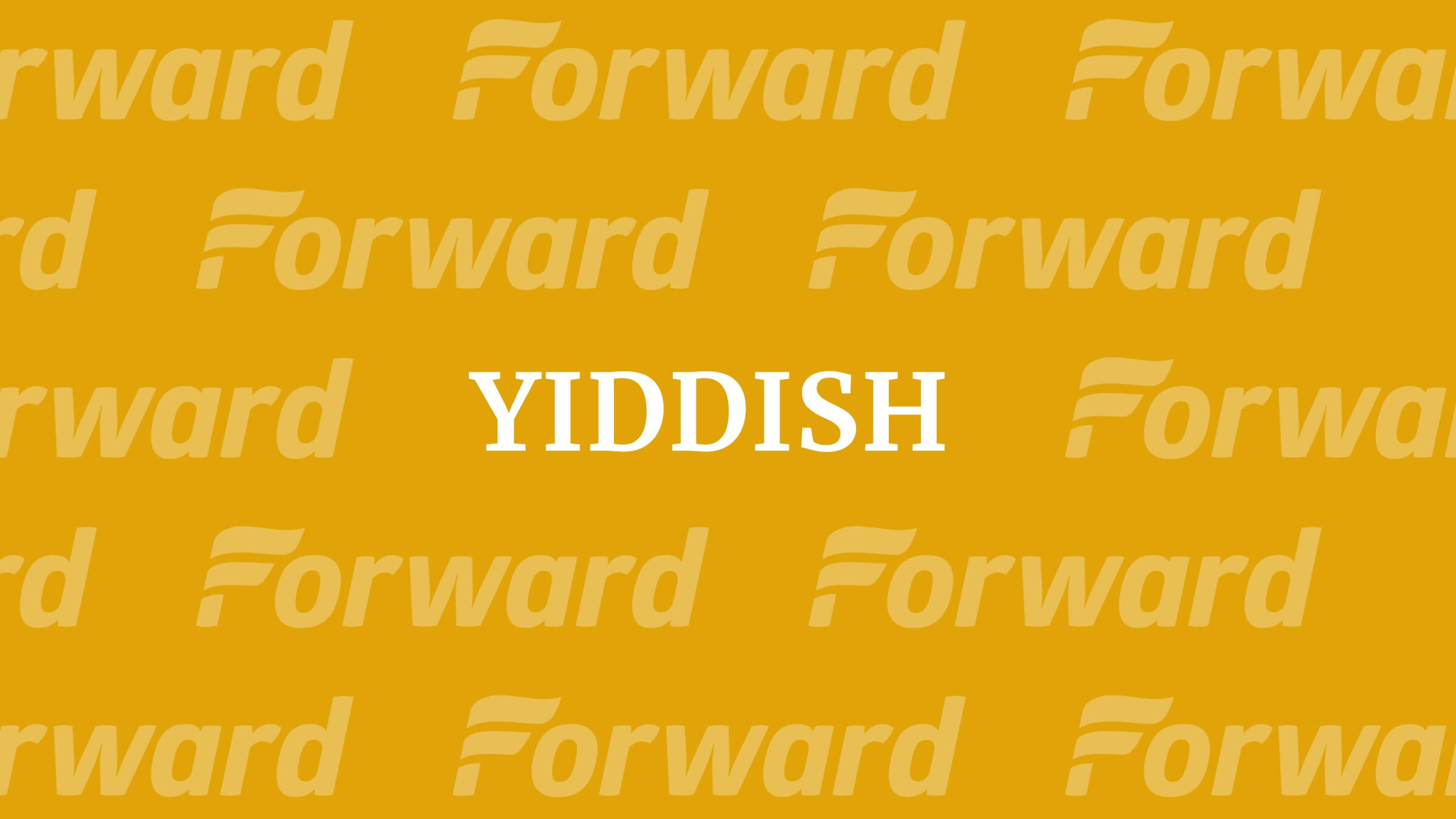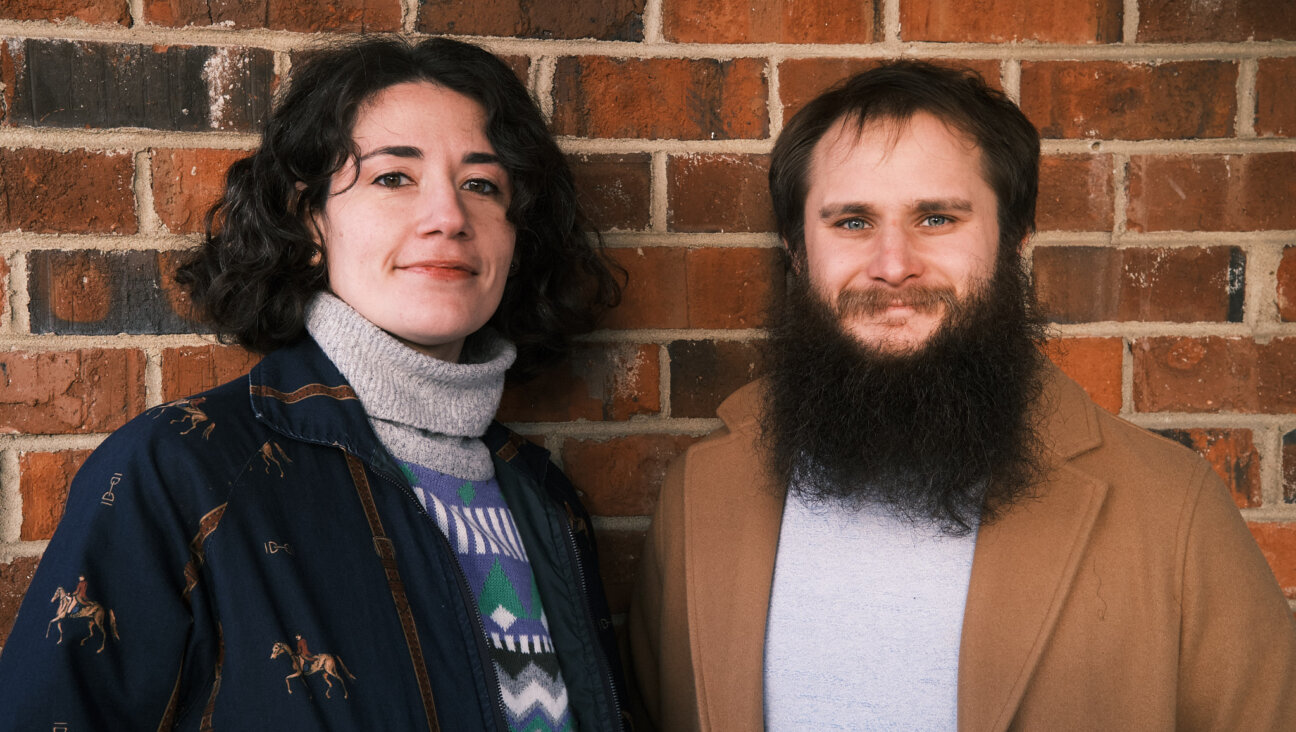Who translated The New York Times’ yeshiva report into Yiddish? It’s a closely guarded secret
The widely read work may undermine Hasidic leaders — and put the translator at risk

Graphic by Angelie Zaslavsky
“The last decree that was similar to this one in its evil was when the Communists came to power in Russia, and at once collapsed Jewish education within their newly formed Soviet Union,” lamented the Hasidic Yiddish-language bulletin on Yiddish24.
The “evil decree” in question is newly approved secular education regulations for New York’s private schools. They come days after The New York Times revealed that most Hasidic students are not testing at grade-level in English or math. (The release of the report was likely timed to the vote.)
Hasidic leaders fear these new government-imposed rules will undermine their religious education system and ultimately destroy it. But even worse for them, the news of just how poorly Hasidic students are faring is circulating within the community — in Yiddish.
The NYT report has been translated into an extraordinarily high-quality Hasidic dialect of Yiddish. The online version has been widely read and shared on Hasidic online forums. A PDF version, created to circumvent the community’s strict internet filters, has also been making the rounds.
A mystery translator
In the Hasidic community, even worse than people who reject their way of life are those perceived as betraying their own community. Known as moyserim, or informers, they can face harassment, excommunication or even extrajudicial violence.
Members of advocacy groups for improved secular education in Hasidic schools have been labeled as such, making anyone perceived as supporting them — say, a Yiddish translator of a critical New York Times report — a persona non grata within the Hasidic community.
It is for this reason that the identity of the Yiddish translator remains a secret.
The fear of backlash was so strong that many Yiddishist colleagues — including librarians, journalists and academics — asked us not to make public even the names of those who were suggested to The Times as possible translators. One directed us to a Twitter thread by the formerly Hasidic Forward contributor Elad Nehorai, who wrote that a Haredi Jew who had spoken out in favor of the report was threatened with eviction.
The New York Times, for its part, has refused to share the name of the translator, how long the process took or how much the translator was paid.
But here’s what we do know, from someone with knowledge of the situation: A Yiddish translator and a Yiddish editor worked on the piece — and they are both Hasidim in good standing.
We also learned that The Times allowed the translation to be interpretive rather than literal, to the degree it would help the report garner acceptance within the community. The translator took this liberty in many passages, while ultimately staying loyal to the article’s original meaning.
That much is clear from the language of the report itself. Only those who grew up in the Hasidic community could have properly done this translation. Most speakers of Yiddish outside of the Hasidic world use “Yiddishist” Yiddish (YIVO standardized Yiddish), which differs significantly in spelling, grammar, syntax and vocabulary from Hasidic Yiddish.
Any hint of inauthenticity or inaccuracy in Hasidic Yiddish terms and usage would have made The Times’ translation easy to mock and dismiss. Instead, Hasidic newspapers, including Der Yid and Der Blatt, have written full responses to the article, suggesting that it is not easy for leaders to ignore.

Taking religious liberties
Translation is an art, not a science, and the translator actively made choices to reflect what in the original report matters to their culturally different readers.
The changes appear to fall into three broad categories. Some changes were made to demonstrate familiarity with Hasidic society. Several passages were changed to preserve the original language of quotes given in Yiddish. And notably, some language choices tone down negative descriptions of Hasidic groups or practices, while others underscore the seriousness of misusing public funds.
The choices made to demonstrate familiarity with Hasidic society are generally related to education. The most important example of this is how the word “school” itself was translated.
In Hasidic Yiddish, the word shule, literally meaning “school,” refers to secular schools and religious girls’ schools. Kheyder and yeshive refer to religious boys’ elementary and high schools, respectively. When a particular religious school is not specified in the article, the translator uses the word moysed, or institution.
The Hasidic newspapers, in contrast, purposefully translated “school” only as shule in their quotations of the NYT, likely to undermine the article and imply that the authors wanted to secularize religious schools.
Not lost in translation
The translator also preserves English words to highlight the secular nature of proposed educational reforms — edyukeshun for state-mandated education and test for a test administered by the state.
Conversely, the translator often refers to religious schools by their colloquial names instead of the official names used in the original article. For example, the school Kehilath Yakov is called simply Pupa (as pronounced within the community), after the Hasidic court that they follow.
There are also places where the translator simply “untranslated” quotes: A line The Times originally translated as “we will not comply,” from Rabbi Aaron Teitelbaum, is restored to “mir veln nisht horkhn” (“we will not listen”).
Was Chabad ‘proselytizing’ in Yiddish, too?
The original article described Chabad as “proselytizing,” which attracted some controversy online due to its negative connotation. The Yiddish version softened the language while retaining the meaning by saying that Chabad prepares their students to ton shlikhus, to be emissaries of their movement, and to do kiruv, religious outreach to other Jews.
Another important difference was how “segregated by gender” was translated: zayendik tsetaylt tsvishn yinglekh un meydlekh, being divided into boys and girls. In English, segregation carries a negative connotation. For the Hasidic reader, division by gender is not a shocking revelation, and it would be odd to preserve a negative connotation to it.
What’s really at stake
Perhaps most importantly, the translator made choices that emphasize the magnitude of the problems described in the article.
Hasidic readers already know that yeshivas receive public money, and know that many other schools do, too. But the translator’s choice to turn “Hasidic boys’ schools have found ways of tapping into enormous sums” of government money into “Hasidic boys’ schools have benefited from exorbitantly (umgehoyer) large sums” was perhaps meant to demonstrate that the system was taking more than their fair share.
This point was more poignantly made in one of the subheadings. “Private schools, public money” was translated into private moysdes, shtayer-tsoler gelter — “private schools, taxpayer’s money.”
While the original reporting was seen as a threat to Hasidic institutions, it may be the quality and thoughtfulness of this Yiddish translation that gives it the most power. The translation, WhatsApped from Hasid to Hasid, may even create seismic change — even if we never truly know who did it.
Editor’s note: The transliterations of Yiddish words into English in this article follow YIVO convention, not Hungarian Hasidic pronunciation.
















